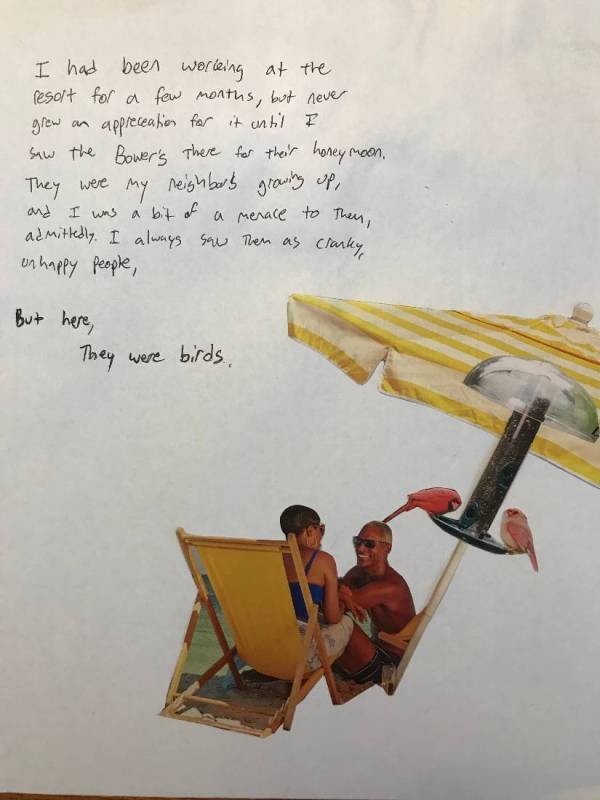Writing from the Image: a Visual Learner's Approach to Creative Writing
Posted on February 25, 2018
"Writing From the Image" at Coe College: A Class Diary
Day 1:
First day, class of 13. The students range in age from 18 – 22. About half of these students have had some experience with creative writing in high school. Most of the students describe themselves as beginners.
We start with collage. I introduce the idea that manually playing around with images (cutting, juxtaposing and arranging them on the page) is like writing poetry. Placing two dissimilar images together on a page can create a metaphor. For example, placing a birds-nest on top of a models head, or replacing eyes with circles of water creates metaphor: her hair was a birdsnest, the eyes are oceans. By playing with cut images you can create quick and interesting metaphors that beg to be filled in with narrative or description. How, and why is this woman’s hair a birds-nest? Is the woman with ocean eyes peaceful or drowning? Once students have found a visual metaphor that intrigues them, they are ready to explain, expand, narrate the metaphor. I suggest that often the strangest or least cliché’d juxtapositions of imagery are the most compelling. Here is an example from the opening line of Denise Levertov’s poem “Song for Ishtar”
This opening line is startling. It grabs us -- maybe it confuses us. Yet, by the end of the poem Levertov has filled in the descriptive details and patterns that unite, or build parallels between the two objects. For me, the poem clicks into place when she adds the metaphor “the poet is a pig.” If the poet (our central point of view) is a pig, of course the moon can be a sow. Now the poem opens-up for me, invites me to notice the difference enhanced by the parallel. The earthly pig, and the heavenly sow. Is the moon the poet’s muse?
Here is our in-class 20 minute writing prompt:
Flip through magazines and cut out images you find interesting. Play around with positioning them together on a blank page of paper. Look for images that don't make complete sense when put together. They may, however, make a kind of poetic sense by sharing one or more qualities, or personal sense (the kind that only you can explain through your story). If you consider yourself to be more storyteller than poet you might pick two objects that completely clash and then create the situation or the world in which they would be brought together. Paste your images down on the page and write. You can write a story or a poem. You may write on a separate sheet or you may write in and around the images. Limited space on a page sometimes creates interesting line breaks, which in turn create interesting new meanings!

Anonymous student, age 19